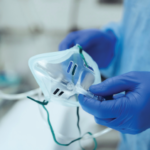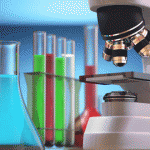At the end of glycolysis, glucose is converted to pyruvate. Th17 cells drive pyruvate oxidation, said Dr. Rathmell. Pyruvate dehydrogenase kinase (PDHK) and dichloroacetate (DCA) selectively affect the Th17 and T-regulatory CD4 subsets. Glycolysis is sort of a “metabolic switch” where we see different T cells either increase or decrease.
“Clinically, it is still to be determined how much metabolic pathways can be manipulated, but things we are doing are affecting those pathways, and that’s why we have the outcomes,” he said. “Different cell types have different abilities to adapt,” so interventions like ketogenic diets may one day be used to manipulate metabolic pathways. “If nutrients outside cells change, then cells have to change to cope, but we don’t yet understand the connections.”
Oxygen Supply
According to Dr. Veale, although glucose may fuel some of the metabolic pathways involved in inflammation, oxygen is another driving force. “If you were sitting on top of a mountain right now, you’d be hypoxic and feel dizzy, nauseous and have a headache,” he told the audience at the sea-level conference. “Our cells’ ability to deal with hypoxia has evolved over billions of years.”
Dr. Veale also said that hypoxia plays a role in angiogenesis in early inflammatory arthritis. Cells can move across the endothelial membrane. The protein VEGF is stimulated by low levels of oxygen during this process. “As oxygen levels go up, they form a tight association between pericytes and endothelial cells,” which signals transcription. VEGF plays a role in RA, for example, making endothelial cells more permeable and stimulating angiogenesis.
According to Dr. Veale, you might see blood vessels at different levels of maturity in a hypoxic joint in RA. This allows for the egress of inflammatory cells. In inflammatory arthritis, blood vessel function is not normal. In joints affected by osteoarthritis, there is mature vasculature. Where there is inflammation, such as in psoriasis with active skin disease, we see immature vasculature that improves after treatment.
VEGF and another protein, Ang2, are found in high levels in synovial fluid of inflamed joints, and they induce Notch-1 signaling in endothelial cells. Notch-1 also mediates VEGF- and Ang2-induced angiogenesis, and it increases the effect of these proteins.
Hypoxia can be seen in some samples of inflamed synovial tissue. In fact, some levels of pO2 are extremely low in some patients’ tissue, and in cases of severe inflammation, there are many immature blood vessels. As oxygen levels go up, blood vessels in inflamed tissue begin to look more normal, he said.


